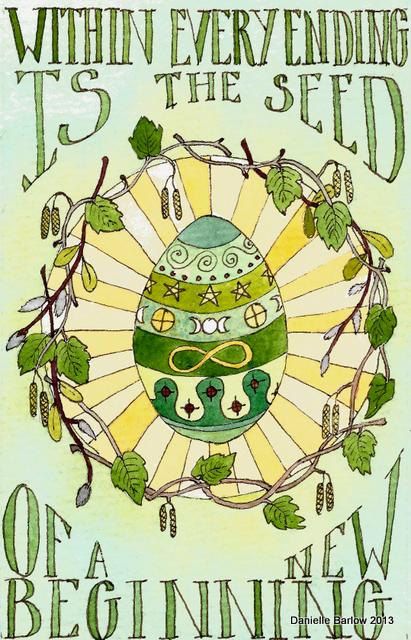
Ostara celebrates the Spring Equinox, new hopes, new beginnings and new relationships. The festival of Eostre--the lighthearted Anglo-Saxon Goddess--invokes the balance between light days and dark nights. Associated with the Easter Holiday, Ostara is known as a time of fertility and abundance and the coming of spring flowers.
As Spring reaches its midpoint, night and day stand in perfect balance, with the light on the increase. The young Sun God now celebrates a hierogamy (sacred marriage) with the young Maiden Goddess, who conceives. In nine months, she will again become the Great Mother. It is a time of high fertility, new growth, and newly born animals.
The next full moon (a time of increased births) is called the Ostara and is sacred to Eostre the Saxon Lunar Goddess of fertility (from whence we get the word estrogen, whose two symbols were the egg and the rabbit).
The Christian religion adopted these emblems for Easter which is celebrated on the first Sunday after the first full moon following the vernal equinox. The theme of the conception of the Goddess was adapted as the Feast of the Annunciation, occurring on the alternative fixed calendar date of March 25 Old Lady Day, the earlier date of the equinox. Lady Day may also refer to other goddesses (such as Venus and Aphrodite), many of whom have festivals celebrated at this time.
